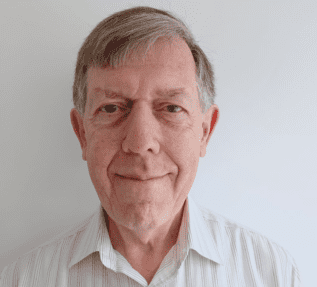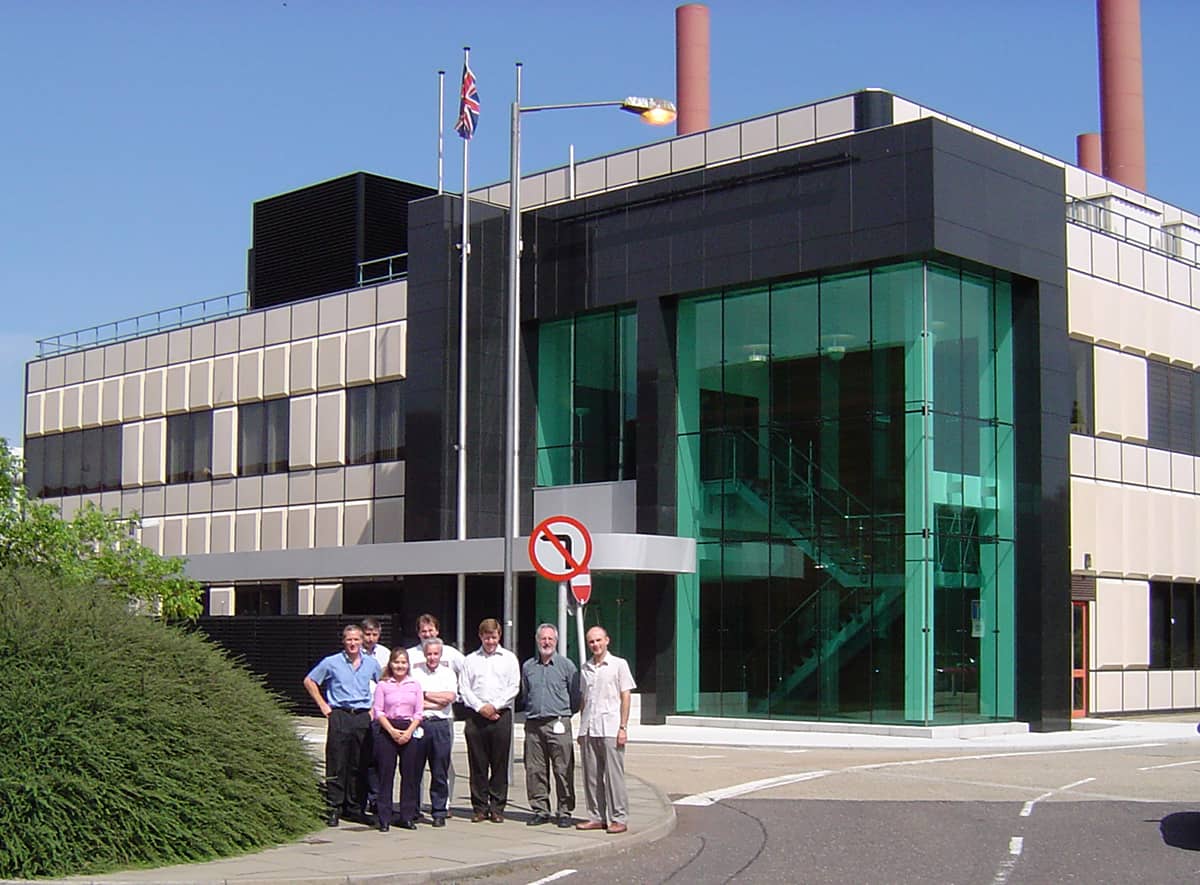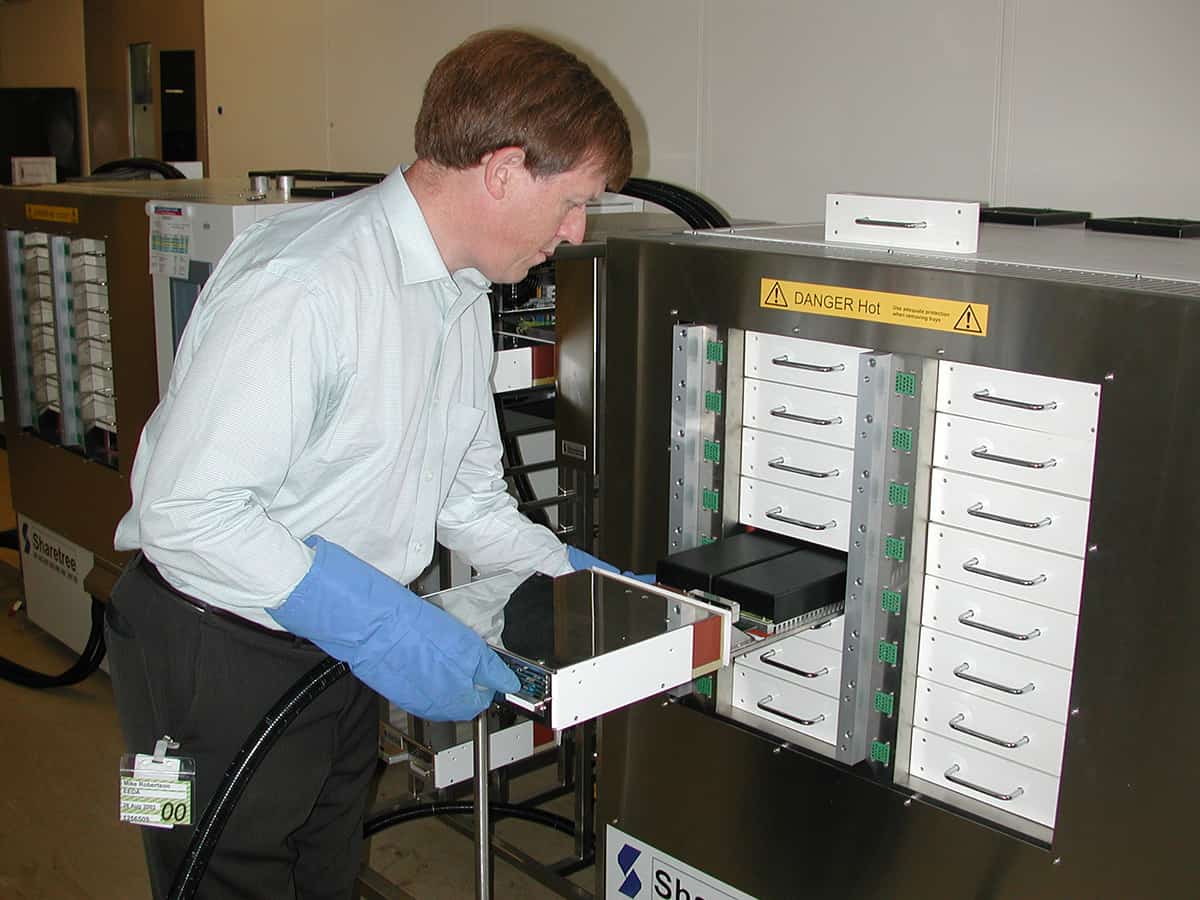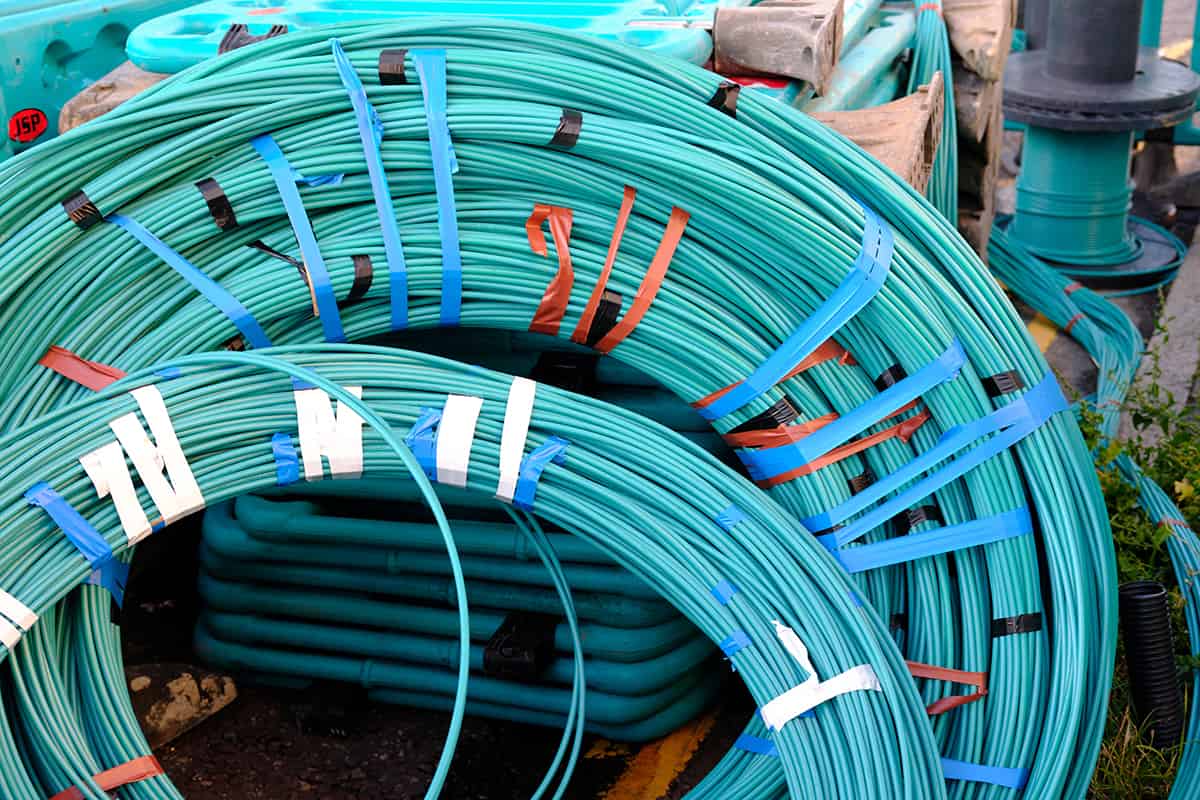Having spent more than 40 years working in optical communications, Michael Robertson is one of the world’s longest-serving experts in the field of fibre-optics. To mark his retirement, he talks to Anita Chandran about cross-disciplinary research, the breakthroughs he made and the good and bad sides of fibre optics in the UK
The ability to simply download a book, video or PDF from the Internet is something that’s easy to take for granted. Just imagine how much longer it would take to receive that same file sent by mail. Whether it’s social media, the news, TV shows, movies or academic papers, the Internet can grant you access to it almost instantaneously. It’s a revolution in our information economy that has truly transformed the modern world.
The story of telecommunications begins in the late 1850s, when a 3000 km-long copper cable transmitting electric signals was laid between Britain and the US, enabling Queen Victoria to send the first trans-continental telegram. The message, addressed to American President James Buchanan, took over 17 hours to transmit but contained only 98 words – less than 500 bytes of information. Today’s telecommunications networks, in contrast, let us transmit gigabytes of data across oceans within seconds, mostly as a result of fibre-optic technology.
To send a message down a fibre-optic cable, it first has to be converted into an optical signal, like pulses or flashes of light, before being fired along the glass fibre as efficiently as possible. The signal then needs to be detected and translated back into data form. It’s a multi-stage process requiring advanced technology that was in part developed and implemented by the pioneering physicist Michael Robertson who has just hung up his laser goggles after almost 43 years in fibre-optic communications.
Robertson spent his career at the world-leading photonics research facility at Martlesham Heath in Ipswich. A corporate laboratory that was initially known as the Post Office Research Station, it has gone through many different ownerships over the years and is now called Adastral Park. Here, Robertson developed technology that vastly increased the speed at which data could be transferred in fibre-optic communications cables. Work undertaken by Robertson and his team has gone on to underpin much of the Internet infrastructure we rely on today – even those backbones of the pandemic, Zoom and Skype, use the technology they developed.
Of course you need the electronics to operate faster and faster, but it’s the same [optical] fibre….that’s what we’ve achieved, far higher data rates over the same fibre.”
Robertson’s research focused on the lasers used to transmit optical signals down the cables, and the detectors that were used to receive them. “We started at something like 8 megabits [per second] in the early 80s and now we’re at 25 gigabits,” he says. This number rises even more when the systems are “multiplexed” together, effectively enabling multiple signals to be sent simultaneously in one optical cable. “When you multiplex it up, we’re talking of 100 gigabits or even higher, giving a massive increase with very little downside.” The work means that minimal additional infrastructure has been required to transmit over 10,000 times as much data as was possible in the 1980s.
“Of course you need the electronics to operate faster and faster, but it’s the same [optical] fibre,” says Robertson. “So that’s what we’ve achieved, far higher data rates over the same fibre.” It means that a movie clip that would have taken over an hour to download in the 1980s can now be accessed in under a second, even though the signal is still being transmitted through the same optical fibres.
A polymath of photon science
Robertson began his journey as a physicist at the University of St Andrews, from which he graduated in 1976, before moving to Durham University to do a PhD in cadmium sulphide solar cells. “I was wanting to do something useful,” he says, “I thought solar energy was important for the future. After [my PhD] was finished, I wanted to keep doing something useful.” Robertson left Durham in 1979 when, he notes, “optical telecommunications was just taking off”.

He took a job at the Post Office Research Station but it was soon taken over by British Telecom (BT), becoming BT Research Laboratories (BT Labs). Here, as an experimental physicist, he worked on semiconductor lasers and photodiodes, which are key components in optical communications networks. Robertson was a fast learner, consolidating the solid-state physics he had acquired during his PhD with numerous other skills.
“I did lots of different things in optoelectronics: I did epitaxy; I did modelling; and I worked in laser reliability. That was where I started,” Robertson says, adding that laser reliability was “the big issue in the early days”. Laser devices based on semiconductors operated at high current densities, meaning that a lot of electrical current had to flow through a small area, which made them prone to fail. “They’d last a day,” he recalls, “and we had to work on getting them to last up to 25 years. This is the sort of lifetime they can do now.” This is also the kind of lifetime these diodes need for reliable performance in optical communications networks.
Around 1989, Robertson took his expertise to a small laboratory about a kilometre away from Martlesham Heath known as BT&D, which BT had set up with the US corporate giant DuPont. He calls himself “the technical guy in charge of detector projects”, an understated description that belies the influence of his work in solid-state physics at BT&D. It was there that Robertson and his team first implemented a technique known as metalorganic vapour-phase epitaxy (MOVP) for growing certain kinds of semiconductor crystals with multiple layers. These semiconductors are used in many of the essential components that make up fibre-optic communications systems, including modulators, detectors and lasers.
The MOVP growth technique was originally pioneered by Rodney Moss, a scientist also based at BT for many years. It enabled, in Robertson’s words, “a dramatic change” in the landscape of optical communications. Before Robertson’s work on MOVP at BT&D, semiconductors could only be grown in tiny pieces with poor reliability. This limited their use, particularly in detecting small signals at the end of telecommunications networks. But with MOVP, Robertson was able to grow much larger semiconductor crystals. These were highly reliable and, importantly, also enabled high-speed optical detectors that could pick up signals that were modulating more quickly, thus increasing the rate at which data could be collected.
Stability in an ever-changing landscape
After a year at BT&D, Robertson moved back to BT’s labs at Martlesham Heath, and in 1993 he and his team at both BT and BT&D won the Queen’s Award for Technology (now part of the King’s Awards for Enterprise) for their work on optoelectronic materials and devices. But then in 2000, during the “dot com” boom, the company sold the facility Robertson worked in to the US optical-communications giant Corning. When the dot com bubble burst in the early 2000s, Corning pulled out of Martlesham Heath, leaving behind much of the lab’s infrastructure and equipment. The site was taken over by the East of England Development Agency, from which Robertson and his then boss David Smith formed a start-up called the Centre for Integrated Photonics (CIP) in 2003. The centre existed until 2012, at which point the government pulled the plug on development agencies and CIP was sold to the Chinese technological company Huawei, in whose ownership it remains today.


The ever-shifting nature of the lab, and Robertson’s career within it, is an emblem of the changing face of the telecommunications industry in the UK. Each company had its own characteristics, strategies and drawbacks. “We had most freedom during the BT days,” he reflects, regarding BT as a world-renowned operation that in many ways pioneered the field. Huawei, on the other hand, has given the lab its clearest commercial focus. “We are closer to the sharp end in Huawei. They want something we can sell out of it.”
Some politicians and commentators have questioned Huawei’s involvement in such a high-profile field, with the UK government having raised security concerns against the company in 2020. The government has said it wants Huawei to be removed from the UK’s 5G networks by 2027 and has also advised fibre-optics firms to distance themselves from Huawei equipment. But when asked about the criticism levied at Huawei, Robertson seems relatively sanguine. “As far as security issues that you read about in the press are concerned, [at Martlesham Heath] we are completely separate from all that. The things we do are materials research, so it has no backdoors; we can just get on with being physicists and materials scientists, which I’m pleased about. Huawei goes to great lengths to ensure it’s not doing anything it shouldn’t do.”
The pursuit of better science and technology – irrespective of a changing working environment – has always been a big driver for Robertson, and working in a company has suited him well.
While many physicists relish the intellectual freedom of academic research environments, Robertson says he was never held back by working in industry, where they had access to more funding and better equipment. There was, he adds, “more of a focus on an outcome”, whereas at universities you had more flexibility.
More academic people may want to pursue their theories rather than be constrained, but I’ve never been like that. I’ve always been happy to make something and see if it works.
“I was happy to go with the flow,” he says. “More academic people may want to pursue their theories rather than be constrained, but I’ve never been like that. I’ve always been happy to make something and see if it works.” Robertson thinks it takes “a very certain type of character” to devote their life to a particular narrow area, but adds that he’s “been blessed by being able to work on all these different things”.
Missed opportunities
In such a long career, is there anything that Robertson would have changed? He points not to his team’s individual contributions, but rather to the failure of BT and the UK government to invest in fibre-to-the-home (FTTH or FTTP) technology. FTTH is the infrastructure for delivering fibre-optic cables straight to homes, residential buildings or offices, to grant tenants and employees high Internet speeds.
“The UK is miles behind the rest of the world in fibre rollout,” he says. This means that access to high-speed Internet is lagging behind in the UK as compared with other countries. Robertson puts this down to the lack of early investment by BT.

“Nearly 20 years ago, I was involved in pushing FTTH from a technical perspective, but it is really the finance person you have to convince,” he says. The government, he explains, were in talks with BT about rolling out FTTH, but they were also worried about a monopoly forming in the telecommunications industry, and so were hesitant to spend the “massive cost” of FTTH on BT – even though, Robertson believes, it would have been a relatively modest amount of just a few billions of pounds. At the same time, BT was unwilling to invest in the technology itself, because it was worried that the government would force the company to open up its fibre network to competition. A deadlock formed, and the chance to build a FTTH network in the UK was lost.
Robertson believes , however, that investment can still help the UK’s FTTH network. “It’s disappointing, but [FTTH] is being rolled out now so that’s good,” he says. “In 2019, the UK was actually bottom of the list in Europe for fibre-to-the-home. We’re now 36th.”
Final reflections
Looking back on a career that has spanned optics, electronics, lasers, modelling and information science, Robertson has enjoyed working across many disciplines of physics, describing himself as “more of a generalist” than someone who adheres to one specific discipline. That diverse experience eventually saw him become Research and Collaboration Manager at Huawei, managing links between the company and other academic and corporate research institutes across Britain and the rest of Europe. Now aged 66, Robertson has officially retired but, like many physicists, he still keeps a toe in the door at Huawei for a couple of days a month.
“I don’t consider my career as being anything spectacular,” says Robertson, who remains resolutely down-to-earth about his vast contributions to optical communications. And when asked if his family ever jokes that he is the reason why the TV works or why videos can be downloaded so fast, he smiles self-depreciatingly and says, “occasionally”. His colleagues, on the other hand, are more forthright about his impact on the field of optical communications.
He’ll be too humble to say it, but his work has benefited anyone in the UK with an Internet connection
Michael Hill-King, collaboration director, Huawei UK
“Michael’s career at Martlesham Heath is a journey through the development of the optoelectronics industry,” says Michael Hill-King, collaboration director at Huawei UK. “He’ll be too humble to say it, but his work has benefited anyone in the UK with an Internet connection.” It’s a view echoed by Henk Koopmans, Huawei UK’s chief executive of research and development, “Michael should feel very proud of the significant contribution he has made to the development of photonics in the UK.”
